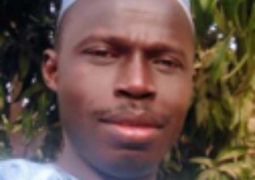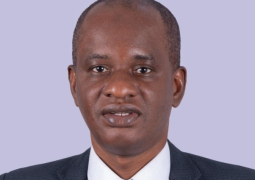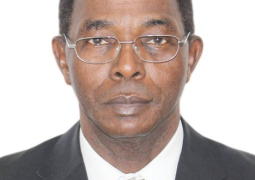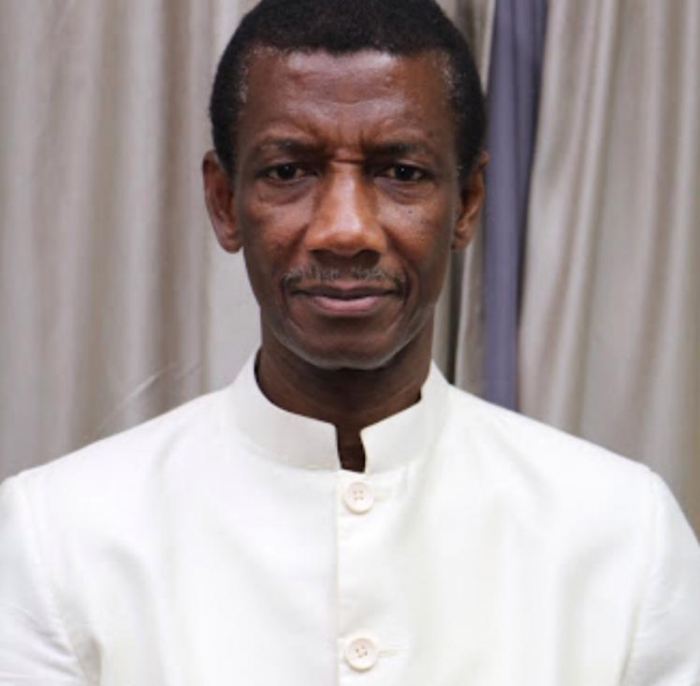
Badara Alieu JOOF : Literary/stylistic analysis of fiction and the teaching of Literature
In 1986, at the Institute of Education, University of London, Badara Alieu Joof, presently the Vice President of the Republic of The Gambia, defended a thesis for his Master's degree on the subject of Literature: Literary/stylistic analysis of fiction and the teaching of Literature (157 typed pages). The paper is subtitled: "Wole Soyinka's The Interpreters as an example".
The study is divided into four chapters: the first three chapters are from the perspective of the reader of the African novel, or at most from the perspective of a literary critic; while the last chapter takes the point of view of the teacher of Literature - and more specifically that of the senior class where the A Level was being prepared (a class which no longer exists in the new education system).
The first chapter gives the theoretical elements of stylistic analysis which will be used in the next two chapters: the role of linguistics, the purpose of stylistic analysis, the constituent elements of fiction (author-reader relationship, language used...) and the criteria for evaluating it.
The other two chapters illustrate the theoretical principles by applying them to a very famous novel by Wole Soyinka: The Interpreters (1965). B. A. Joof examines the theme of the novel (five young Nigerian intellectuals frustrated by the social realities of their country) and the characters of the main characters. He then shows how Soyinka handles satire in his novel and how he breaks new ground on a hitherto unpublished subject - that of the author himself as an intellectual.
The third chapter is specifically literary and stylistic: the author has selected four excerpts from the novel which he considers characteristic of Soyinka's literary devices. He gives a detailed and exhaustive stylistic analysis. He then focuses on the use of metaphors, compound nouns, images and comparisons. Finally, he reflects on one aspect of the writer's writing: the opacity of his syntax, which sometimes confuses the reader.
The fourth and final chapter leaves room for the literature teacher to help his or her students understand the writers' writing and style. Using the four extracts identified in the previous chapter, B. A. Joof proposes a graduated method in eight stages which allows all the main aspects of Soyinka's - or any other author's - style to be gradually revealed: internal organisation of sentences and their elements, relations between sentences, the cohesion of the text, effects linked to the words chosen (alliteration, etc.), literary effects, processes of animation and personalisation, the manifestation of the author's message, etc.
The perspective of B. A. Joof (who has occupied senior positions in the Government, including Assistant Secretary at the Office of the President, Permanent Secretary at the Ministry of Education, Minister of Higher Education, Research, Science and Technology and now Vice President of the Republic of the Gambia) is interesting because it is oriented towards the teaching of Literature to students in the upper grades. Theoretical tools, despite their abstract nature, must be used to make people understand and love Literature. This task of popularisation through appropriate pedagogical means is at the very heart of the teacher's work.
This approach could now be applied to Gambian literary texts, which are still too absent from literature lessons in Gambian Senior Secondary Schools.
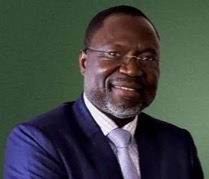 Dr Omar TOURAY : The Gambia and the World: A History of the Foreign Policy of Africa's smallest State 1965-1995
Dr Omar TOURAY : The Gambia and the World: A History of the Foreign Policy of Africa's smallest State 1965-1995
To know the history of a country, it is not enough to reconstruct the internal events that shape the national community. It is also necessary to know what its relations with external countries are because one is defined as much by the internal path as by the external relations with others. While there are works on the relations between The Gambia and Senegal, until now, there has been no comprehensive picture of The Gambia's foreign policy since independence. Omar A. Touray, currently the President, Economic Community of West Africa States (ECOWAS), former Minister of Foreign Affairs and diplomat in Brussels, is filling this gap by publishing his doctoral thesis in International Relations, which he defended at the University of Geneva and which is entitled The Gambia and the World (209 pages). The book is subtitled a History of the Foreign Policy of Africa's smallest State 1965-1995. The book was published by the Institut für Afrika-Kunde in Hamburg in 2000 and published online by Cambridge University Press on 3 March 2011.
The study covers The Gambia from independence in 1965, during the time of President Jawara, to the change of regime with the arrival in power of President Jammeh. While personalities and political orientations may change, there are geo-political data that are permanent and that condition much of the diplomacy. The size of the country, the smallest state in Africa, obliges it to ensure the security of its territory, which requires special relations of good neighbourliness with its neighbour, in which it is landlocked, but also with other African states and countries of the world that can guarantee its territorial integrity if it were threatened. On the other hand, natural conditions and global data that easily jeopardise its economy are major factors that guide Gambia's foreign policy. Domestic events, when they challenge the stability of the institutions, necessarily have repercussions on foreign policy as well.
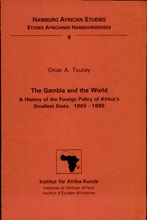
The book has nine chapters. The first chapter introduces the general issue of small states, of which The Gambia is a part. The second chapter presents the background to The Gambia, focusing on its history, economy, and diplomatic functioning. Chapter 3 examines the beginnings of foreign policy after independence (1965-1974); Chapter 4 analyses foreign policy during the years of the energy crisis and inflation (1975-1980); Chapter 5 focuses on the influence of domestic economic issues, such as drought, food self-sufficiency and sub-regional cooperation (1975-1985). Chapter 6 deals with Gambia-Senegal relations after 1975; Chapter 7 gives a comprehensive view of Gambia's relations (1980-1995) with the countries of the world from the major perspective of economic cooperation in a period when the poor financial situation and domestic unrest increased dependence on international institutions and rich countries. Chapter 8 examines political positions on wars and attempted secessions in African countries. The final chapter concludes with the positive aspects and limitations of Gambia's foreign policy.
FOCUS OF AUTHORS
Badara Alieu JOOF : Literary/stylistic analysis of fiction and the teaching of Literature
In 1986, at the Institute of Education, University of London, Badara Alieu Joof, presently the Vice President of the Republic of The Gambia, defended a thesis for his Master's degree on the subject of Literature: Literary/stylistic analysis of fiction and the teaching of Literature (157 typed pages). The paper is subtitled: "Wole Soyinka's The Interpreters as an example".
The study is divided into four chapters: the first three chapters are from the perspective of the reader of the African novel, or at most from the perspective of a literary critic; while the last chapter takes the point of view of the teacher of Literature - and more specifically that of the senior class where the A Level was being prepared (a class which no longer exists in the new education system).
The first chapter gives the theoretical elements of stylistic analysis which will be used in the next two chapters: the role of linguistics, the purpose of stylistic analysis, the constituent elements of fiction (author-reader relationship, language used...) and the criteria for evaluating it.
The other two chapters illustrate the theoretical principles by applying them to a very famous novel by Wole Soyinka: The Interpreters (1965). B. A. Joof examines the theme of the novel (five young Nigerian intellectuals frustrated by the social realities of their country) and the characters of the main characters. He then shows how Soyinka handles satire in his novel and how he breaks new ground on a hitherto unpublished subject - that of the author himself as an intellectual.
The third chapter is specifically literary and stylistic: the author has selected four excerpts from the novel which he considers characteristic of Soyinka's literary devices. He gives a detailed and exhaustive stylistic analysis. He then focuses on the use of metaphors, compound nouns, images and comparisons. Finally, he reflects on one aspect of the writer's writing: the opacity of his syntax, which sometimes confuses the reader.
The fourth and final chapter leaves room for the literature teacher to help his or her students understand the writers' writing and style. Using the four extracts identified in the previous chapter, B. A. Joof proposes a graduated method in eight stages which allows all the main aspects of Soyinka's - or any other author's - style to be gradually revealed: internal organisation of sentences and their elements, relations between sentences, the cohesion of the text, effects linked to the words chosen (alliteration, etc.), literary effects, processes of animation and personalisation, the manifestation of the author's message, etc.
The perspective of B. A. Joof (who has occupied senior positions in the Government, including Assistant Secretary at the Office of the President, Permanent Secretary at the Ministry of Education, Minister of Higher Education, Research, Science and Technology and now Vice President of the Republic of the Gambia) is interesting because it is oriented towards the teaching of Literature to students in the upper grades. Theoretical tools, despite their abstract nature, must be used to make people understand and love Literature. This task of popularisation through appropriate pedagogical means is at the very heart of the teacher's work.
This approach could now be applied to Gambian literary texts, which are still too absent from literature lessons in Gambian Senior Secondary Schools.
Dr Omar TOURAY : The Gambia and the World: A History of the Foreign Policy of Africa's smallest State 1965-1995
To know the history of a country, it is not enough to reconstruct the internal events that shape the national community. It is also necessary to know what its relations with external countries are because one is defined as much by the internal path as by the external relations with others. While there are works on the relations between The Gambia and Senegal, until now, there has been no comprehensive picture of The Gambia's foreign policy since independence. Omar A. Touray, currently the President, Economic Community of West Africa States (ECOWAS), former Minister of Foreign Affairs and diplomat in Brussels, is filling this gap by publishing his doctoral thesis in International Relations, which he defended at the University of Geneva and which is entitled The Gambia and the World (209 pages). The book is subtitled a History of the Foreign Policy of Africa's smallest State 1965-1995. The book was published by the Institut für Afrika-Kunde in Hamburg in 2000 and published online by Cambridge University Press on 3 March 2011.
The study covers The Gambia from independence in 1965, during the time of President Jawara, to the change of regime with the arrival in power of President Jammeh. While personalities and political orientations may change, there are geo-political data that are permanent and that condition much of the diplomacy. The size of the country, the smallest state in Africa, obliges it to ensure the security of its territory, which requires special relations of good neighbourliness with its neighbour, in which it is landlocked, but also with other African states and countries of the world that can guarantee its territorial integrity if it were threatened. On the other hand, natural conditions and global data that easily jeopardise its economy are major factors that guide Gambia's foreign policy. Domestic events, when they challenge the stability of the institutions, necessarily have repercussions on foreign policy as well.
The book has nine chapters. The first chapter introduces the general issue of small states, of which The Gambia is a part. The second chapter presents the background to The Gambia, focusing on its history, economy, and diplomatic functioning. Chapter 3 examines the beginnings of foreign policy after independence (1965-1974); Chapter 4 analyses foreign policy during the years of the energy crisis and inflation (1975-1980); Chapter 5 focuses on the influence of domestic economic issues, such as drought, food self-sufficiency and sub-regional cooperation (1975-1985). Chapter 6 deals with Gambia-Senegal relations after 1975; Chapter 7 gives a comprehensive view of Gambia's relations (1980-1995) with the countries of the world from the major perspective of economic cooperation in a period when the poor financial situation and domestic unrest increased dependence on international institutions and rich countries. Chapter 8 examines political positions on wars and attempted secessions in African countries. The final chapter concludes with the positive aspects and limitations of Gambia's foreign policy.
Read Other Articles In Opinion



